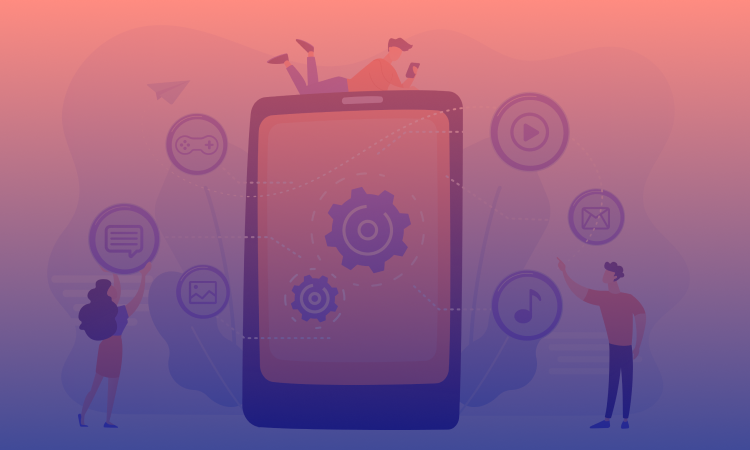In 2025, mobile engagement automation is evolving from simple campaign management into an adaptive, insight-driven discipline. For customer experience leaders, this shift represents a fundamental change in how brands listen, respond, and improve every interaction.
While automation is widely used for scheduling push notifications or in-app messages, it is also increasingly used for closing feedback loops, using AI-powered insights, and creating UX experiences that adjust in real time. Here are five trends defining how forward-looking organizations are transforming mobile engagement in 2025, and what they mean for your strategy.
1. Real-Time Insight Loops Inside Mobile Experiences
The biggest change in 2025 is the rise of interactive insight loops. Apart from delivering messages, these systems also observe user behavior, interpret responses, and refine the next interaction almost instantly.
When a user engages with an app, every tap, scroll, or pause becomes a signal. Modern platforms now capture those micro-interactions to guide what happens next. Instead of one-off campaigns, automation becomes a continuous conversation that learns and adapts based on every outcome.
Platforms like Braze are pioneering this approach, using behavioral triggers to deliver “moment-based” messages that reflect live user context. This shift requires CX and product teams to design experiences where automation and UX blend seamlessly — insight flowing directly into the interface rather than into separate dashboards.
For mobile teams, the key is to map the loop clearly: from user event → trigger → action → measurement → refinement. When that cycle runs smoothly, mobile engagement feels responsive, not robotic.
2. Hyper-Contextual Engagement Based on Real Behavior
In 2025, personalization means more than knowing a user’s name or last purchase. It’s about understanding context, i.e., where, when, and how users interact.
Automation systems increasingly respond to real-world signals such as location, device state, activity patterns, and even network conditions.
This kind of micro-moment awareness helps brands deliver messages that feel relevant and timely. For example, a fitness app might trigger a hydration reminder after a workout session, or a travel platform might offer local dining suggestions right after hotel check-in.
CleverTap notes that contextual engagement depends heavily on first- and zero-party data, or information shared directly by users, making it both effective and privacy-compliant.
For design teams, context is everything. The mobile UX must gracefully accommodate prompts and recommendations that appear at just the right time, so that instead of interrupting, they actually add value.
3. Multi-Device and Cross-Touchpoint Orchestration
Mobile engagement no longer lives solely inside the app.
Today’s users switch fluidly between apps, mobile web, wearables, and even connected devices. Successful engagement automation must follow that journey seamlessly.
Cross-device orchestration ensures that an experience started on one channel continues logically onto another. For instance, a user might browse on a mobile, receive a reminder on their smartwatch, and complete a transaction on a desktop, without having to enter details every time they switch to another device.
Platforms like Braze emphasize unified workflows across channels, including in-app, push, email, SMS, and web, ensuring that automation adapts to whichever channel a customer prefers at that moment.
The design challenge here is maintaining consistency. The message, tone, and timing should align across every device while respecting the unique UX of each platform.
Cross-touchpoint automation should feel natural.
4. Privacy-First Personalization and Trust-Centric Automation
Consumers are increasingly becoming privacy-aware. Therefore, engagement systems now combine personalization, transparency, and consent.
This shift from “data collection” to “data collaboration” has reshaped how mobile engagement platforms operate. Instead of relying on third-party data, brands increasingly use first- and zero-party data, or preferences, interactions, and feedback that users willingly share.
CleverTap highlights how this privacy-aware model can still drive rich personalization while maintaining trust.
CX leaders should therefore design experiences that give users visible control through simple preference centers, opt-in moments that feel natural, and clear value exchange (“Share your preferences for more relevant recommendations”).
Trust goes beyond compliance; it’s also the foundation for meaningful engagement.
5. AI-Powered Automation Embedded in the Mobile UX
Finally, automation is moving from the background to the foreground.
In 2025, artificial intelligence is increasingly embedded directly within the mobile experience, adapting content, prompts, and screens dynamically as the user interacts.
AI now helps determine when to engage, which channel to use, and what message variant will resonate best, all in real time.
The result is a more intuitive, “self-optimizing” UX: instead of static flows, users encounter experiences that adjust automatically to their behavior.
CleverTap shows how AI-driven marketing automation can reduce manual setup while improving journeys. Similarly, Braze integrates predictive modeling to tailor message cadence and content for each user.
For designers, this means building interfaces that can adapt, featuring UI components that update in response to data or AI recommendations.
For operations teams, it requires governance: monitoring model performance, testing message accuracy, and ensuring AI remains aligned with brand voice.
Summary
The future of mobile engagement automation is a continuous feedback system, one that listens, learns, and evolves.
In 2025, the defining capabilities are real-time insight loops, contextual intelligence, cross-device orchestration, privacy-first design, and embedded AI.
Organizations that master these trends will go beyond campaign automation. They’ll build mobile ecosystems that understand and respond to their customers, transforming engagement from a scheduled activity into a living, adaptive experience.

